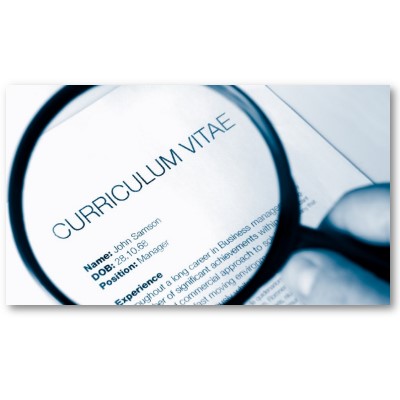Email Applications: How Nigerian Graduates Goof (II)

By
Expectedly, my last article on the above subject generated considerable interests. I got numerous inquiries via mail and twitter on some of the issues raised in the expose. The contemporary unemployment situation in Nigeria makes the competition for the few available job spaces keen.
Nigeria is not a solo traveller on the corridor of unemployment. According to a 2012 International Labour Organisation, ILO report; of the 202 million people unemployed globally, 40% of them are youths. The ILO estimates that about 30 million more people became unemployed globally as against 170 million people in 2007. And 75 million people of this figure are young men and women. In Sub-Saharan Africa, the picture is not too different; youth population continues to rise swiftly. About 297 million people are between the ages of 10 and 24. That is about 297 million youth. By 2050, the projection is that 561 million people would be youth on the continent. If the age bracket is expanded to 35 years (which captures the job seeking population on the continent) in concord with the African Youth Charter then the figure would likely double. Nigeria, the most populated country on the continent, currently has 54% of her youth population being unemployed in 2012, says the National Bureau of Statistics. The report indicates that two in five Nigerian youths are currently unemployed. The clear implication of this is that it is a difficult task to get a job in Nigeria. That is one sound reason why the first step, which is sending an application, has to be excellently done.
Back to the experience sharing following from the recruitment experience which I started last week, one of the applications also copied (cc: carbon copy) three other email addresses and one could not but wonder to what end that was supposed to serve. Was the applicant informing a friend or was he or she sending it to his or her other email addresses to serve as reservoir for applications? It is also erroneous to leave a blank subject line. Every mail serves a particular purpose and it is only civilised to label it in that light. This is in addition to labelling the document(s) being sent appropriately as mentioned last week.
One major goof that featured consistently was the inconsistency in font types and sizes used in the curriculum vitae and the letter that followed. The employer is human and it is only smart of an applicant to make his job easier. He or she is seeking for the right candidate for the opening and it means there is an obligation to read through the letter and the curriculum vitae. The document should be easy on the eyes. This means a single font should preferably be used throughout the length of the document. Is there an official font for applications? Not necessarily; as there as a number of fonts that serves official purposes (‘Googling’ official fonts may help). It all depends on the preference of the applicant. Whatever the choice, it should be easy to read with the content of the document being in sentence case except maybe the headings and sub headings. Capital letter use in email correspondences and even on social networks is synonymous to shouting and people do not like it. Also incorrect is the use of lower case all through the document. The font size should also not be too big. For most official fonts, anything between 10.5 and 12 is fine. There is also that problem about aligning documents. In my judgement, I think this was the major problem with most of the applications. The document should be justified. The spacing should be decent, bullet points similar and the document should be like a properly done make-up — good to look at, superficial and certainly not distracting.
The grammar and spellings in some instances were also awful. Most word applications have a spell check provision that can be deplored. And even when it is not enough, respect for the application process would make the applicant to seek help from friends and family. See it as the first meeting with the prospective employer and you are already sending an unsuitable indicator. Predictably, like a number of employers have complained since the new media waves hit us, there were equally a number of social media styled abbreviation in the cover letter. Seeking help from another pair of eyes before sending such could help correct this fatal blunder. We also saw applications that had attachments we did not require; at least, at that moment. Primary School Leaving Certificate, Project Management Certification, National Youth Service Corps Certificate and a number of others was attached by a particular applicant and it was plainly wrong to have done so. One dominant issue in the emails I received following the first part of this commentary is the issue of referees. A particular reader sought to know the propriety of saying ‘available on request’. My thought is this – at that primary stage of decision making by the employer, the merit of your personal profile is what would count and not that of your referees. However, if one is fortunate to be called for an interview, then it is the responsibility of the interviewee to have all the referees and their contacts neatly typed on a sheet; of course clearly titled for example- ‘Referees for Victoria Daniel’ and also carry summary of your personal details again. Nevertheless, these things are not cast in stone, especially since we know there are instances of people who have gotten jobs despite having a colourful CV. I also do not think it is appropriate to put up referees phone numbers indiscriminately; an email address at most and maybe job specification of the referee should suffice given the proliferation of phony vacancies. At least, save your referees from potential scammers!
Applicants should also take note not to send PDF documents. It is not a preference, except when the employer specifically requests for it. And wait for this, three of the CVs we got also had the passport photograph of the applicant on the CV. I think only a modelling agency would likely admire such misplaced ingenuity! Graphics and designs should generally be avoided in any business correspondence of this nature.
The concluding part of this subject would occupy this space next week. I am hoping to dig my claws into the future of job applications and how the social media would count in that almost foreseeable future. Let’s continue the conversation; I am still @SolaFagro on twitter.
Email Applications: How Nigerian Graduates Goof (III)
Established in March 2013, JarusHub is a Nigerian information hub with focus on career and management. It is rated Nigeria's most authoritative destination for online career resources. It parades an array of Nigerian professionals who share their career experiences with a view to bridging career information gap and mentoring a generation to success. Whether you're a student, a recent graduate or an established professional, or even an executive, you will always find something to learn on JarusHub. All enquiries to jarushub@gmail.com or 0808 540 4500. Facebook: www.facebook.com/jarushub; Twitter: @jarushub or @mcjarus.
Path to Big 4: Stream 11
April 4, 20245 Best Useful Applications Of AI in Modern World
November 17, 2023Career Q&A with Jarus: Oil & gas career, poor CGPA
September 17, 2023
3 comments
Let us have your say by leaving a comment belowCancel reply
Recommended For You
-
America’s Top 13 CEOs and the Courses They Studied in School
November 20, 2017 -
MARRYING AGRICULTURE DEGREE WITH COMPUTER FLAIR
July 24, 2015 -
BEST WAYS TO PREPARE FOR A JOB INTERVIEW
June 2, 2016










[…] Email Applications: How Nigerian Graduates Goof (II) […]
[…] 11. Sola Fagorusi’s treatise on the gaffes Nigerian graduates commit in email applications […]
Good day. Thank you for this enlightening article. I’d like to know if there is a particular reason to not send documents in PDF format. I am usually skeptical about sending documents in .doc format due to variations in versions of word editors available to different people which may alter the presentation of the document.